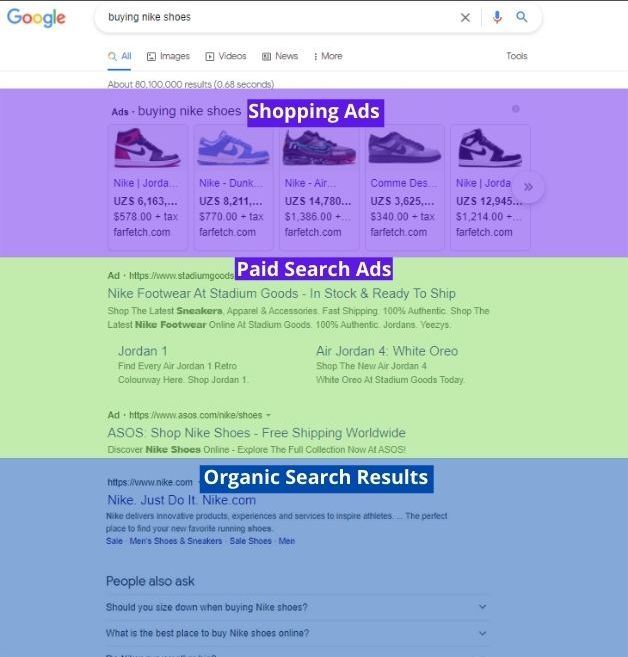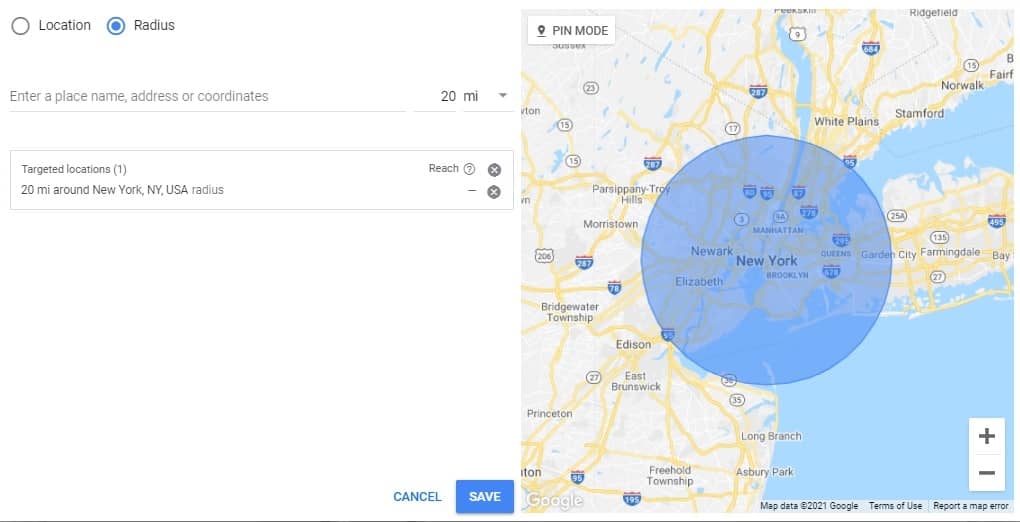Expected Traffic of Google Ads Without a Website (3 Important Factors)

The one way to run ads on Google without a website is by running Google Shopping Campaigns.
However, the traffic to expect on both normal Google search campaigns and shopping campaigns cannot be predicted. There is no exact number.
If you think of your ad traffic as a Venn diagram, you will know that your ad traffic will only come from Google’s total traffic. And then, there will be factors that can give you an edge and help you measure your ad traffic.
With a platform like Google paid search, you will probably have more prospective customers than you can serve. Instead of being vague, let’s look at the numbers.
Based on stats, Google gets approximately 63,000 search requests in one second. This converts to 5.6 billion search requests in one day. The search requests are made from over 259 million unique visitors in one day.
In case the numbers have not amazed you yet, look at it this way. Imagine a square where 259 million people are. They are all looking for answers to different issues. You have a solution in your hands and you can mount it on the platform in that square.
There will probably be a stampede to get to the solution. Still, many marketers have a hard time driving considerable traffic to their ads. Why is this? And what can they do?
In this article, we will see all there is to driving both the right traffic and a considerable amount of it to your ad even without a website.
Quick Overview: What Traffic is and how it is measured
An academic definition of traffic in this context would be: “The number of people or visitors to an online site based on intent or purpose”.
I guess the definition turned out not-so-academic. However, three things are important in the above definition. They are:
- Visitors (people)
- Online site
- Intent or purpose.
These components of traffic are indispensable. When the intent of the visitor then aligns with the content of your site, an ideal prospect is what results.
In paid ads, traffic is measured by Impressions and Clicks. These metrics show the number of people who are interested in things relating to your offer (impressions) and the number of people with whom your offer resonates (clicks).
When you are advertising without a website, your traffic will be measured by impressions and e-commerce store visits in the case of standard shopping campaigns.
In smart shopping without a website, traffic is measured by impressions and calls, orders, and visits to your local store.
How having a Website influences Traffic Generation in Google Ads
The real question is: Does having a website influence traffic on Google Ads? The answer is NO. It does not.
To run ads on Google without a website, you use Google shopping campaigns. You can both upload products manually or from an e-commerce store to Google Merchant Center and advertise with standard shopping campaigns.
You can also set up a Google My Business Account and advertise using smart shopping campaigns.
Regardless of the method that you use, when online searchers can see your ads and their intent match your product offering, you can drive traffic to your business or e-commerce store.
Now that we have established that having a website does not influence the measure of traffic that you get, let us see what does influence it.
Factors Influencing Traffic Generation in a Google Ad Campaign without a Website
In this section, I will discuss 3 factors that decide how traffic flows into your store or business. Let’s dive in.
- Ad Rank
You probably did not expect to have this at the top of the table. But Ad Rank is what brings in a considerable amount of ad impressions. To measure traffic, impressions are measured first.
Shopping campaigns appear at the very top of the search results page (SERP) unlike search ads that can rank even below non-advert search results.

However, there is also a ranking system for shopping ads without a website. In standard campaigns, some products show right before the search results. Many other products show only when they click the button that says ‘view more’ or the equivalent.
Knowing that it is only in moderate to rare cases that a searcher has the patience to go through all the product listings, your aim as a marketer is to rank high to make more viable impressions.
The ad ranking system is determined by Google. However, your ad rank can be improved by keyword relevance, quality score, cost-per-click, and landing page quality.
- Keywords
Both the keywords that you bid for and the negative keywords are important factors in traffic generation.
Keywords can tell you about the searcher’s intent. When your ads are then triggered by keyword matches, you get ad impressions.
When the searcher’s intent then matches what they see in your shopping ad, traffic is increased to your business and product store.
Mistakes that marketers make can be adding low search volume keywords or not adding negative keywords to reduce unnecessary traffic.
Negative keywords save your ad budget. Keywords with higher volume can help to test your campaigns faster and reach your ideal customers faster.
In smart shopping campaigns, keywords cannot be added because Google is in control of how your ad is shown. However, with time, the algorithm gathers enough data to know when to best show your ad.
See more on how to calculate expected traffic from keywords.
- Location
Location targeting can greatly increase or reduce the traffic that flows into your business.

In Google Ads without a website, location targeting works if you only want to serve a local audience. However, when location targeting is too restrictive, there may be a drastic reduction in traffic flow.
Targeting a wide location may result in an increased number of impressions. But, it may reduce the efficiency of your ad spend.
This is because certain demographics may not suit your client’s avatar and even if impressions increase, clicks and store visits will not.
Location targeting needs to be used to target the right audience that you can serve without wasting your ad budget.
Conclusion
If you are looking for where to get massive traffic, Google Ads is the place. The numbers are mind-blowing once you know how to direct them to you.
Running ads without a website does not also influence the amount of traffic that you can generate. You can generate as much traffic as ads with websites.
With the three factors that affect traffic generation, you can identify where the screw is loose in your ad and you can tighten it. Other less important factors that may affect your traffic flow are languages, devices, and ad scheduling.
You no longer have to worry unnecessarily about the traffic to expect in your ad.
If you have any more questions, be free to reach out in the comments and you will get your answers ASAP.
Cheerio!

